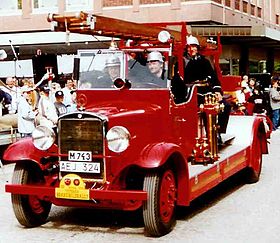The Volvo Group is a Swedish multinational manufacturing corporation headquartered in Gothenburg. While its core activity is the production, distribution and sale of trucks, buses and construction equipment, Volvo also supplies marine and industrial drive systems and financial services. In 2016, it was the world's second-largest manufacturer of heavy-duty trucks with its subsidiary Volvo Trucks.

Tidaholms Bruk was a Swedish a vehicle manufacturer. Originally a woodworking and cart manufacturing business founded in the Middle Ages, the company evolved along the centuries and entered the automotive industry with the creation of the Tidaholm car in 1903. Their early models include Tor I, Tor II, and TB, known for their reliability. Facing financial difficulties during the Great Depression, the company eventually closed in the early 1930s. While the company is no longer in operation, it played a significant role in Sweden's automotive history.

The Volvo FL is a series of trucks manufactured by Volvo Trucks. It was introduced in 1985 and has remained in production ever since, in a variety of different models of different weight ratings. It has been used in a variety of different roles aside from a truck, including as a fire engine.

The Volvo F88/F89 was a series of heavy-duty trucks produced by Swedish automaker Volvo between 1965 and 1977.

The Volvo PV650 Series is an automobile manufactured by Volvo between 1929 and 1937. The model name stand for PersonVagn, 6 cylinders, 5 seats; the third digit indicates the version.

The Volvo LV4 was a light truck produced by Swedish automaker Volvo between 1928 and 1930. The designation LV4 stands for LastVagn (“truck”), 4 cylinders.

The Volvo LV76-79 was a light truck produced by Swedish automaker Volvo between 1934 and 1940.
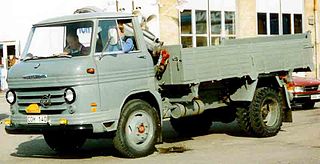
The Volvo Snabbe and Trygge was a series of light trucks produced by Swedish automaker Volvo between 1956 and 1975.

The Volvo LV71-series was a medium size truck produced by Swedish automaker Volvo between 1932 and 1935.

The Volvo Brage/Starke/Raske was a series of medium size trucks produced by Swedish automaker Volvo between 1954 and 1972.
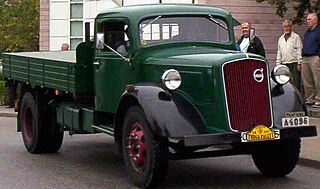
The Volvo LV180/190 and 290-series, or the Longnose was a truck produced by Swedish automaker Volvo between 1937 and 1951.
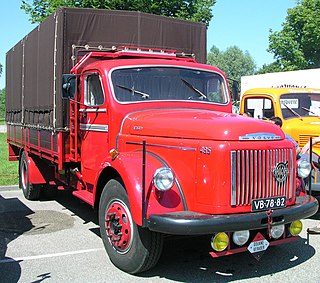
The Volvo Viking was a truck produced by Swedish automaker Volvo between 1953 and 1973.

The Volvo Titan was a heavy duty truck produced by Swedish automaker Volvo between 1951 and 1973.
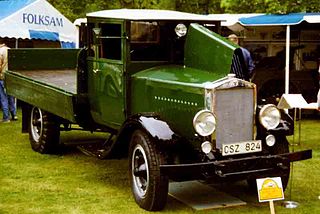
The Scania-Vabis 314/324/325 was a series of trucks produced by Swedish automaker Scania-Vabis between 1925 and 1936.
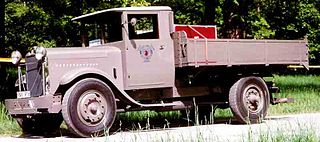
The Scania-Vabis 335/345/355 was a series of heavy duty trucks produced by Swedish automaker Scania-Vabis between 1931 and 1944.

The automotive industry in Sweden is mainly associated with passenger car manufacturers Volvo Cars and Saab Automobile but Sweden is also home of two of the largest truck manufacturers in the world: AB Volvo and Scania AB. The automotive industry is heavily dependent on export as some 85 percent of the passenger cars and 95 percent of the heavy vehicles are sold outside of Sweden. The automotive industry and its sub-contractors is a major part of Swedish industry. In 2011 around 110,000 people were employed and the export income of 150 billion SEK accounted for 12 per cent of Sweden's export income. During 2009 128,738 passenger cars and 27,698 heavy vehicles were built in Sweden. Koenigsegg is also a famous Swedish company which makes some of the fastest cars in the world, but also some of the most expensive. They currently produce models such as the Jesko, Gemera, and CC850.

The Club of Four was an alliance of four European truck manufacturers: Saviem, Volvo, DAF, and Magirus-Deutz.
The Toyota FA and BA were heavy duty trucks introduced in February 1954. They were facelifted versions of the earlier BX/FX trucks, retaining those trucks Type B and Type F six-cylinder petrol engines. The first letter in the model name indicates the engine family fitted; in 1957 the Type D diesel engine was introduced in a model known as the DA. The second letter indicated the size of the truck, with shorter medium duty versions being coded BC/FC/DC. A second letter "B" was used on bus versions of this chassis. A second generation FA/DA was introduced in 1964 and was built in Japan until 1980, when Hino replaced Toyota's heavier truck lines entirely. The DA, however, was also built in numerous other countries and manufacture continued into the first decade of the 21st century.

The early 1930s Renault commercial vehicles were a range of modular chassis produced by Renault, sold under various configurations, primarily trucks, buses and coaches. The range was the first from Renault to get diesel engines and it abandoned previous design styles from the company. The range was gradually replaced from 1935 onwards by the ACx and ADx light range, the ABx medium range and the ZP bus/coach.
